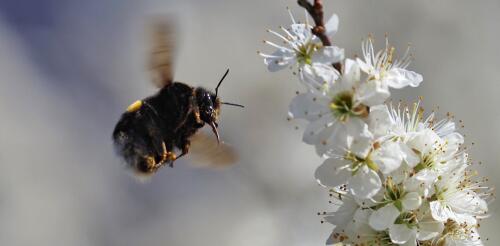Social insects
As trees and flowers blossom in spring, bees emerge from their winter nests and burrows. For many species it’s time to mate, and some will start new solitary nests or colonies. Bees and other pollinators are essential to human society. They provide about one-third of the food we eat, a service with a global value estimated at up to $US577 billion annually. But bees are interesting in many other ways that are less widely known. In my new book, “What a Bee Knows: Exploring the Thoughts, Memories, and Personalities of Bees,” I draw on my experience studying bees for almost 50 years to explore how these creatures perceive the world and their amazing abilities to navigate, learn, communicate and remember. Here’s some of what I’ve learned. It’s not all about hives and honey Because people are widely familiar with honeybees, many assume that all bees are social and live in hives or colonies with a queen. In fact, only about 10% of bees are social,...
